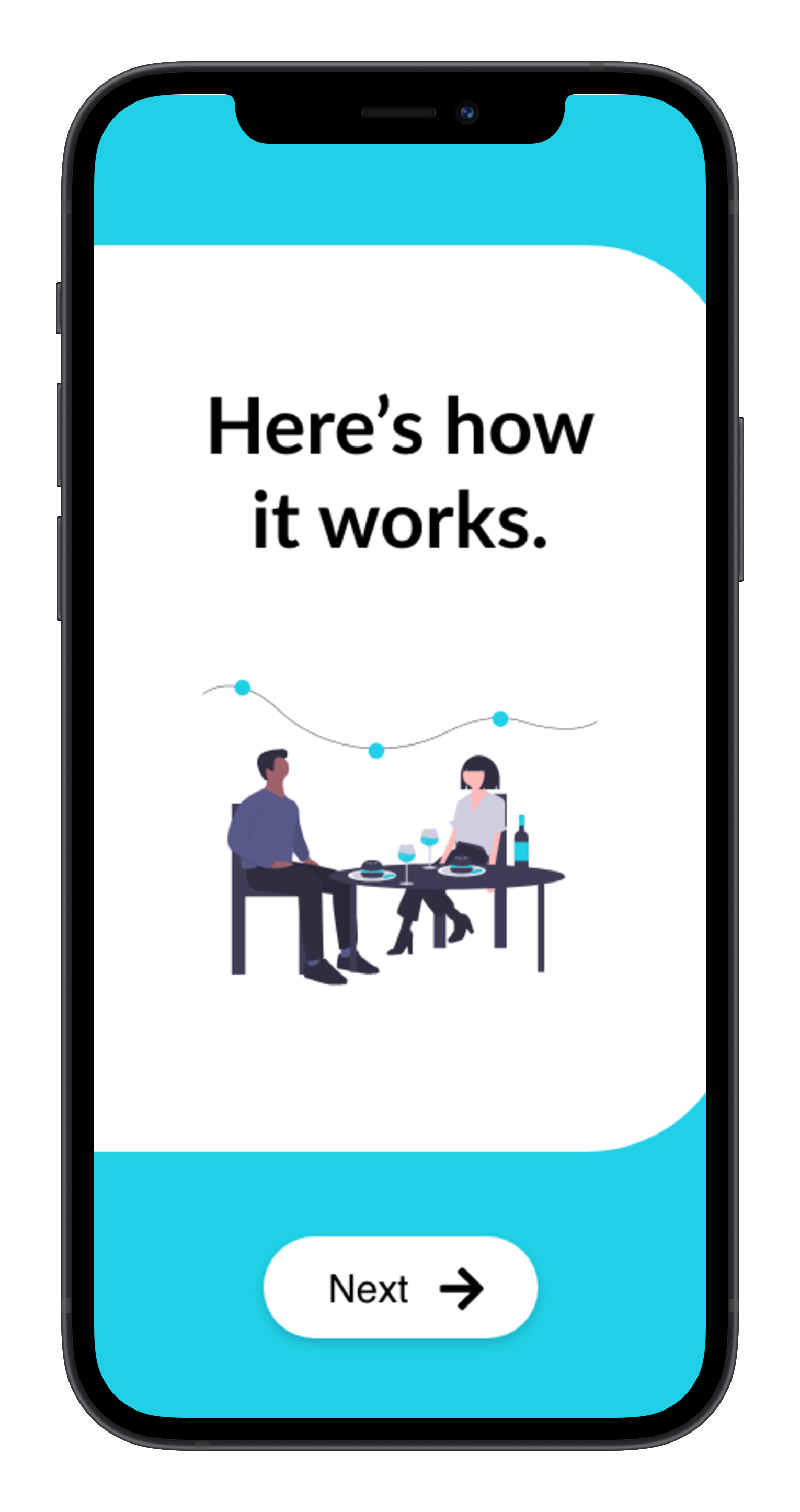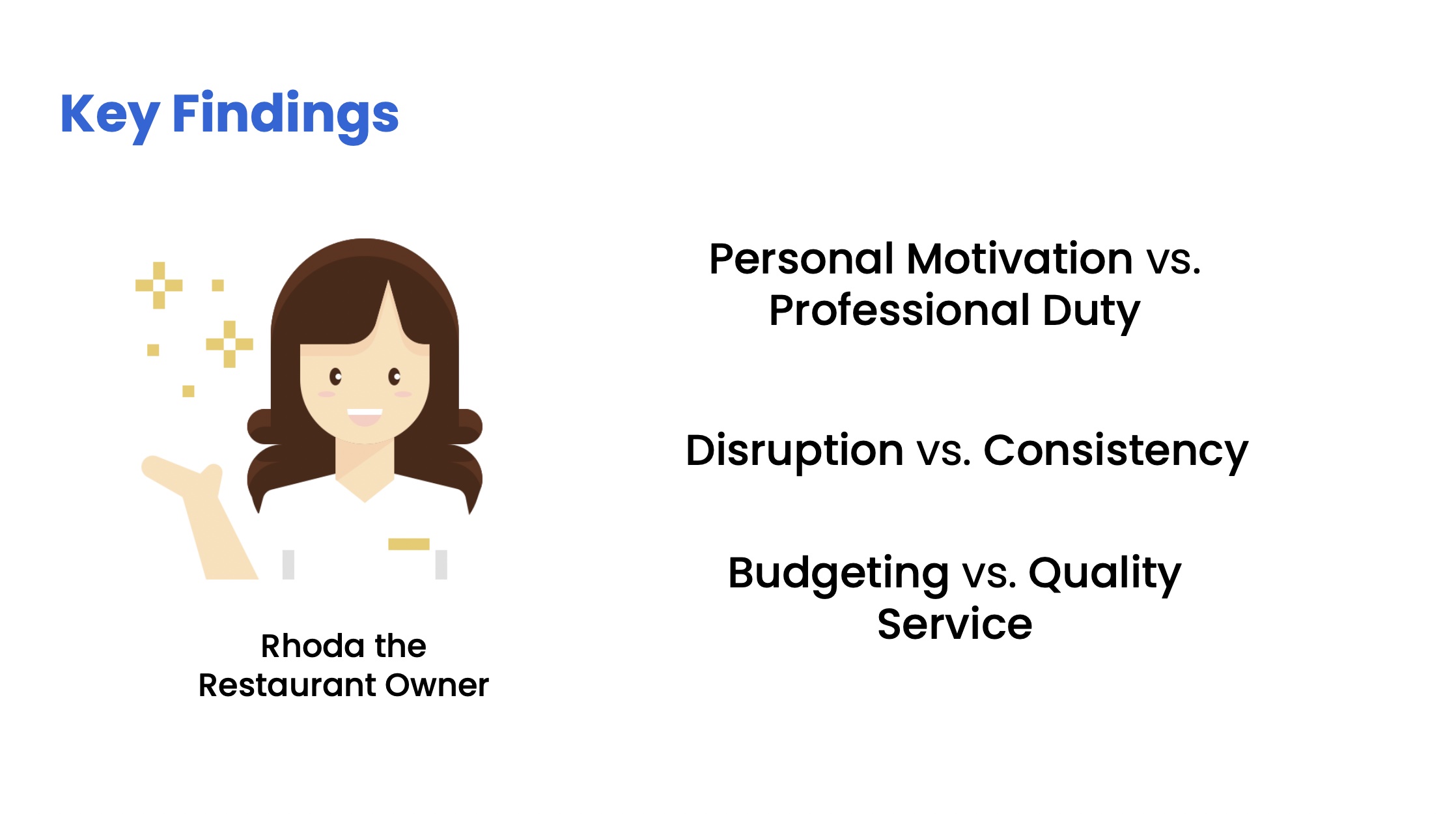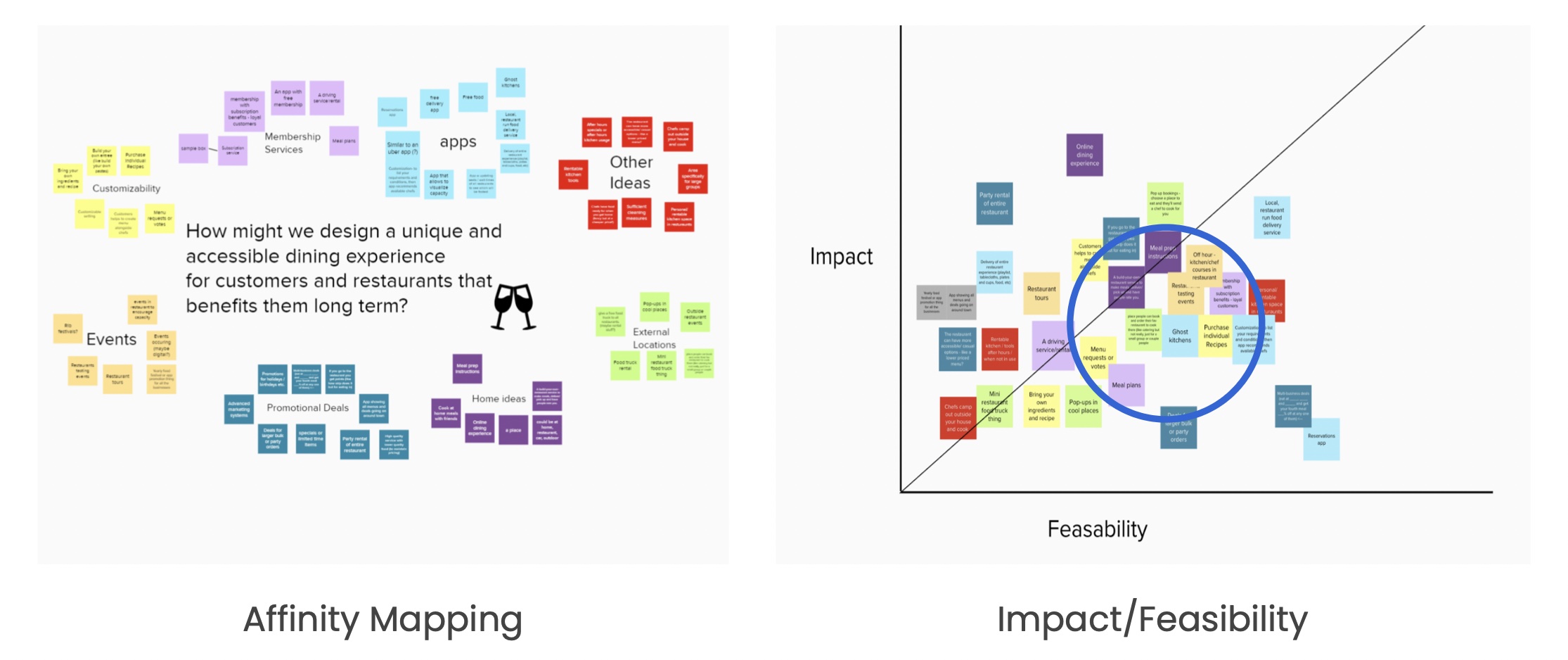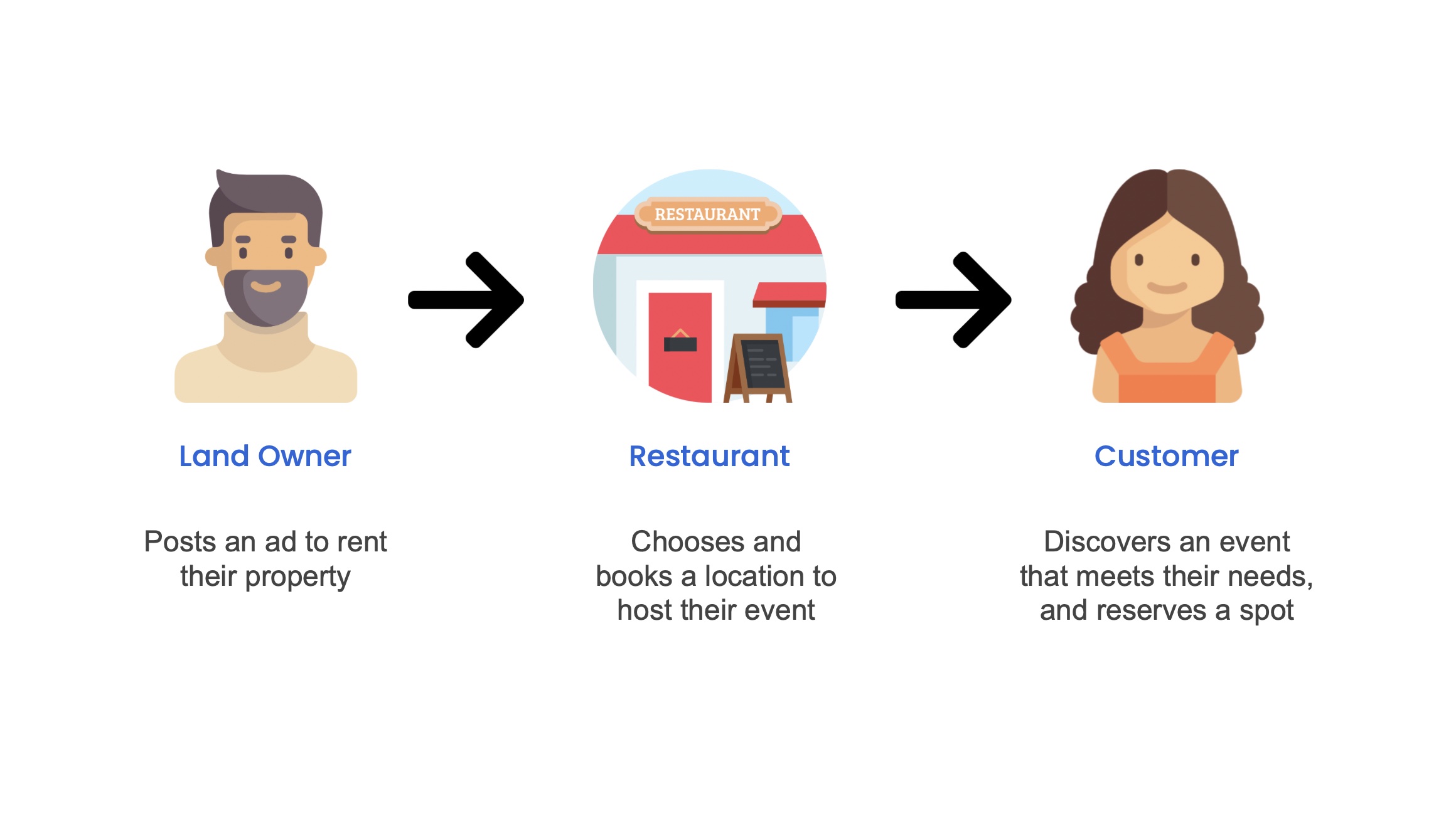EatOut. Restaurant
dining redefined.
EatOut is way more than just an app. Instead, its a totally new dining experience designed to meet the needs of everyone involved.
March, 2021 | -- minute read

Project Framing
It has become fairly common knowledge that ever since the beginning of the COVID-19 pandemic, restaurants have been hit extra hard by a lack of customers, limitations on space, and overall competition in the ever-growing food delivery sector. In an already difficult industry in which to keep a business running, it has become almost impossible to do so, and many restaurants owners have been forced to close down their shops.
In short, restaurants are suffering — and suffering greatly.
Realistically, however, this restaurant problem has been around far before the pandemic hit. In fact, restaurants have been facing more and more challenges in the years leading up to today: one of the largest being third-party delivery services such as Grubhub or UberEats taking absolutely massive chunks of the profits for themselves. Restaurants have been facing other problems too, such as a dwindling amount of customers choosing to eat in and turning to more convenient options.
Approach
The approach to this project was simple: define the stakeholders, heavily research the problem space, define the needs of our users, and brainstorm a solution.
Tools used:
- Pen and Paper
- Value Proposition Canvas
- Adobe XD
- Miro
- Procreate
- Adobe Illustrator
- Google Suite
User Research/Research Phase
Unfortunately, due to the COVID-19 Pandemic, we were fairly limited in the way in which we could run user studies. Looking back on the project, I would have preferred to have been able to run user interviews and focus groups, in order to promote further conversation and insights. Because of these restrictions, we were limited to secondary research for our information about restaurant workers in particular (owners, chefs, waitresses, etc).
In order to learn about the customers, we utilized open-ended interviews, in addition to secondary research. We mapped out our findings using lots of maps, including user journey maps, empathy maps, and the design proposition canvas, in order to best understand the user’s needs.

The finding from our research was enlightening, to say the least:
What we discovered was contrary to our prior beliefs.
One thing we realized in doing the research about the customers was that our initial assumptions about how people thought of the whole dining experience were entirely different from what people actually thought. For instance, one of our group members assumed that when it came to dining out, there were two big factors that mattered: the amount of money it would cost; and the amount of time it would take.
But actually, when we turned to the restaurant customers, the price of the food, and the time spent weren’t even in the list of things that truly mattered. Instead, there were 5 key components that either make or break the entire experience.
Key Findings (customers)
1. Uniqueness
Restaurant customers are looking for some special and memorable.
2. Social interaction
Dining is not just about getting food as quickly as possible. Customers enjoy spending quality time with friends.
3. Quality service
Lack of quality service can lead to negative experiences at restaurants, and even a downright bad time.
4. Recognition
Many people seek recognition, by posting photos of their food and experience to social media platforms like Facebook or Instagram.
5. Good food
Though obvious, this one cannot be left out. Quality food will significantly impact whether or not customers return.
In short, these findings boil down to this one key point:
Rather than much care being taken towards price, time, etc... there is an emotional attachment that fixes itself to the entire dining experience.
Those feelings that come with having quality conversations with family members or a friend, or being able to show other people a photo on Instagram of what your meal looked like and receiving feedback and praise on how delicious it looks, or even just the whole experience of spending the day looking forward to getting off work and heading over to a restaurant -- these are the things that really matter to people, and so we made sure we pivoted our focus going forward.
Key Findings (Employees)
That being said, we didn’t want to neglect restaurant owners, employees, and chefs from our research, because they also play a main role in delivering the whole experience to the customer. This is a condensed version of our research which shows the different needs of each of these people.


As can be gathered from above, there are clear tensions that exist between doing something for the benefit of themselves vs the restaurant. For example, chefs want to be creative with their food, but working at a restaurant requires extreme consistency. Similarly, managers or store owners might want to disrupt the established norms of a restaurant in order to be different from the competition, and yet are required to maintain the same standards.
Therefore, it was imperative that whatever our solution might look like, that it would help to bridge the gap between these tensions. Rather than take away from one side or the other, we wanted to help both.
Solution
How might we create a unique and accessible dining experience that benefits both the customer and the restaurant long term?
In an effort to take this problem and form a solution, our group placed our HMW Statement on the centre of a whiteboard on Miro and diverged to brainstorm as many possible solutions as we could. We then placed all our ideas in an affinity map(below), grouping the related ideas and then colour coding them to be identifiable later on. After this, we chose our best ideas and placed them on an impact vs feasibility chart - impact being how successful it will be in meeting users’ needs, and feasibility being how cost and time effective the idea is. We wanted something that was high in both impact and feasibility. As you can see on the right, the blue circle indicates the ideas with the highest on both scales. These are the ideas we took and voted on to form our final solution.

And this is where I'm proud to introduce EatOut., an experience that takes restaurant dining to the next level -- the perfect mix of unique and fun experiences, quality time with friends and family, and of course: great food. And, it can happily satisfy the needs and requirements of everyone involved. Let’s show you how it works.
Our original idea was to allow restaurants to hold pop-up bookings in scenic places around the city. This would provide a unique experience for customers, and allow restaurants to promote themselves and drive customer engagement. However, there could be many legal requirements that could stop a restaurant from just setting up shop wherever they’d like - so in order to get around this, we introduce a third party, being the landowner. Here's how it works:

First, the land/homeowner can put up their land or space for rent -- it can be an indoor or outdoor venue, depending on the resources of the owner and the needs of the restaurant. Next, the restaurant can view the available spaces and choose a location where they can host an event. Having chosen and booked the location, and organized the event, the customer can search for an event that fits their needs, and book their spot accordingly. Just think of it as the Airbnb of the restaurant industry.
How It Meets Each User's Needs
Here’s how our idea meets the needs of our users: First of all, it is useful to the customer because it presents a unique and fun way to experience dining. It provides an opportunity to spend time with friends and family in new ways and would certainly provide an opportunity to gain recognition through social media or other means.
Second, this benefits the restaurant because it provides an opportunity for promotion, and builds a much stronger relationship with the customer. Restaurants could even take advantage of these events by trying out new menu items and allowing the customers to vote on their favourites.
Finally, this would meet the chef’s need to expand their skills and try new things; the customer’s need to have unique and great tasting food; and the restaurants need to grow their bonds with customers and make disruptions happen in the food industry -- it would be pretty amazing for customers to say they contributed to making the menu at their favourite restaurant!
Conclusion
We believe this solution will be effective because it’s backed up by our user research, and as we’ve mentioned it can truly meet the needs of everyone involved. Furthermore, not only is it something new and unique that restaurant customers can enjoy and experience, and not only is it something that caters to that emotional feeling that attaches itself to dining in general, but it’s something that can help out restaurants -- restaurants that are greatly suffering both during the pandemic, but also before -- it’s a solution that we can hold out for them to take advantage of when they need it the most.
Of course, this project would not have been possible without the help of my fellow group members: Dean Crossman, Chantal Vaillancourt, Anson Cheuk Hang Liu, Carisa Coutinho, and Haoran Lin. I would also like to thank professor Lorraine Randall for her support and instruction.
We were proud to receive the second place prize and $1,500 prize money for the presentation and execution of our project.
Thanks for reading 😌
Go Back